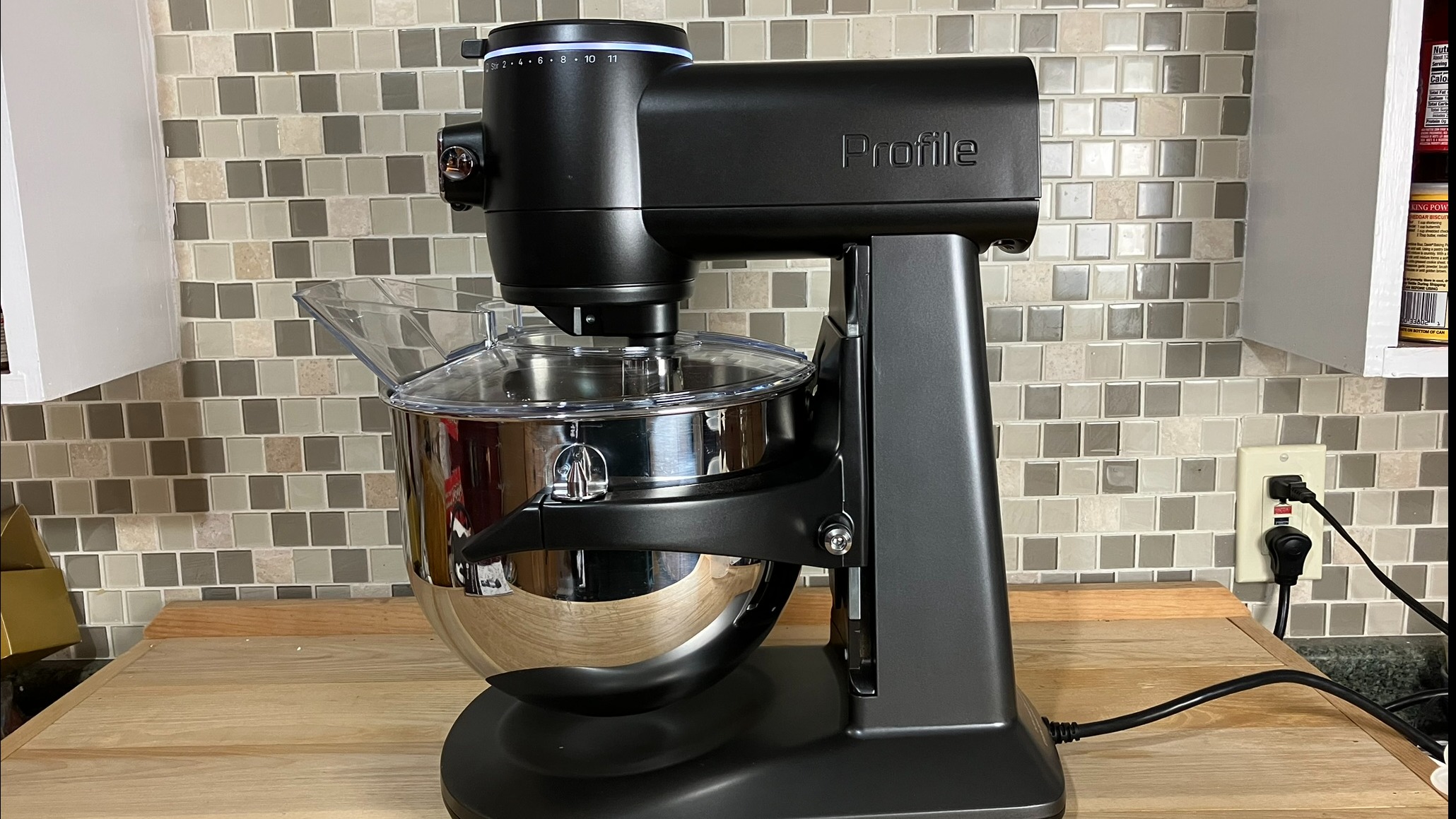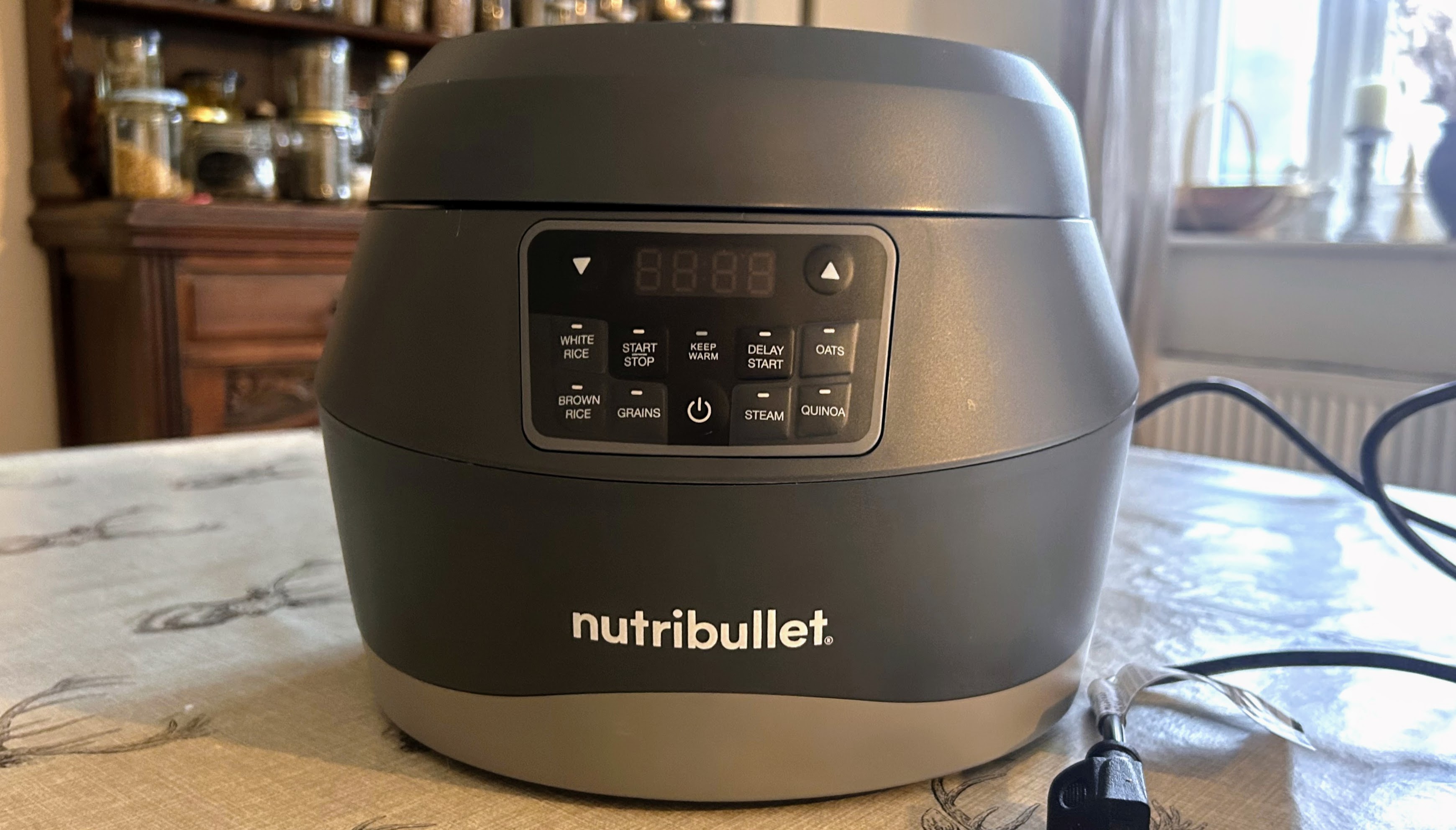Swiss brand JURA crafts automatic espresso machines to maximize beverage choice while minimizing effort. They're premium machines that are more of an investment, with the cheapest coffee machines in their range selling for around $1,000.
Because of the high price point, you'd expect JURA's machines to be among some of the best coffee makers. They certainly offer a great deal in terms of features, but as with all single-serve coffee makers, it can largely depend on who they're best suited to.
The GIGA 10 is one of the latest and most expensive models in the JURA range. It features some of the best customizations in an automatic bean-to-cup machine, reflected in the $4,999 price tag. If you're willing to splash out, you won't need any fancy barista skills to brew the 35 drinks here. You can even fine-tune each drink to your liking, all through a one-touch control panel.
All the best espresso machines can brew barista coffees, but the JURA GIGA 10 works for you. We were impressed by everything the comprehensive machine can do, but there are undoubtedly a few things to note before deciding if it's for you.

Dan tested the JURA GIGA 10 over 4 weeks, which became the primary coffee machine used in the house. To utilize all the features and customization on offer, Dan (and occasionally their housemates) tried as many different drinks as possible, adjusting the settings to see just how much the coffee machine could do. Testing was done in a kitchen with three different coffee beans used.
JURA GIGA 10: Key specs
| Row 0 - Cell 0 | Row 0 - Cell 1 | Row 0 - Cell 2 |
| Water tank capacity | 88 ounces | Row 1 - Cell 2 |
| Coffee type | Automatic bean-to-cup | Row 2 - Cell 2 |
| Bean capacity | 2x 10 ounces | Row 3 - Cell 2 |
| Grinders | 2x electronically adjustable ceramic disc grinders | Row 4 - Cell 2 |
| Pumps | 2x high-performance, 15-bar pumps | Row 5 - Cell 2 |
| Brew options | 35 | Row 6 - Cell 2 |
| Control | One-touch 6.7in panoramic panel | Row 7 - Cell 2 |
| Dimensions | 12.6 x 16.34 x 19.53in (w x h x d) | Row 8 - Cell 2 |
| Weight | 39.7 pounds | Row 9 - Cell 2 |
JURA GIGA 10: Price & availability
The JURA GIGA 10 retails for $4,999. It is, without a doubt, one of the most expensive at-home coffee machines on the market. This price reflects the amount of tech packed into the huge appliance, but sadly, it makes it unaffordable for most. You can find the GIGA 10 at the JURA website or at Amazon, Williams Sonoma, and 1st in Coffee for around the same price.
At the time of writing, it's the third most expensive machine in JURA's range, behind the GIGA X7 and the GIGA X8 - both professional coffee machines suited to offices and workspaces. Because of the GIGA 10's size, weight, and price - I was surprised it isn't labeled similarly. Instead, it's marketed for home use rather than commercial use.
Score: 3 out of 5
JURA GIGA 10: Setup
The first thing you notice about the JURA GIGA 10 is just how massive it is. The delivery driver delivered it to me in a crate, rolling it to my door on a dolly. There was work being done in my kitchen at the time, so I had to store it upstairs for the day. And trust me, getting it upstairs was a mission.
Inside the crate was the coffee machine, the milk system, and a set of cleaning wipes with instructions.

There was little setup once it was unpacked and plugged into my kitchen wall. The removable drip tray was already attached, so I had to connect the power cord and attach the milk system - essentially a glass jug connecting to the machine via a bendy pipe.
The coffee machine came without a manual, however, but it didn't take long to find one online to figure out how to turn it on. I couldn't find the power button, admittedly, but it is hidden underneath a cover at the top of the machine. The cover wasn't the easiest to open either, and it did seem a little excessive considering how much surface is taken up to accommodate only an on switch.

Regardless, the machine was set up relatively quickly and was instantly the most premium-looking appliance in my kitchen.

JURA GIGA 10: Design
The JURA GIGA 10 can do a lot. Brewing 35 different specialties is not something many coffee machines can do, so it's no surprise that the machine itself is so large. It took up considerable space on my kitchen counter, just about fitting to the end in terms of depth.
The coffee machine has two disc grinders and two 15-bar pumps. This enables it to make a variety of coffees in a way that ensures each specific coffee type is brewed correctly. The water tank, accessible on the top-left of the machine, can hold an impressive 88 ounces of water, saving you from refilling it often. At the top-right, you'll find a panel that opens to reveal a measuring spoon - a nice touch, I thought, to utilize the rest of the space.
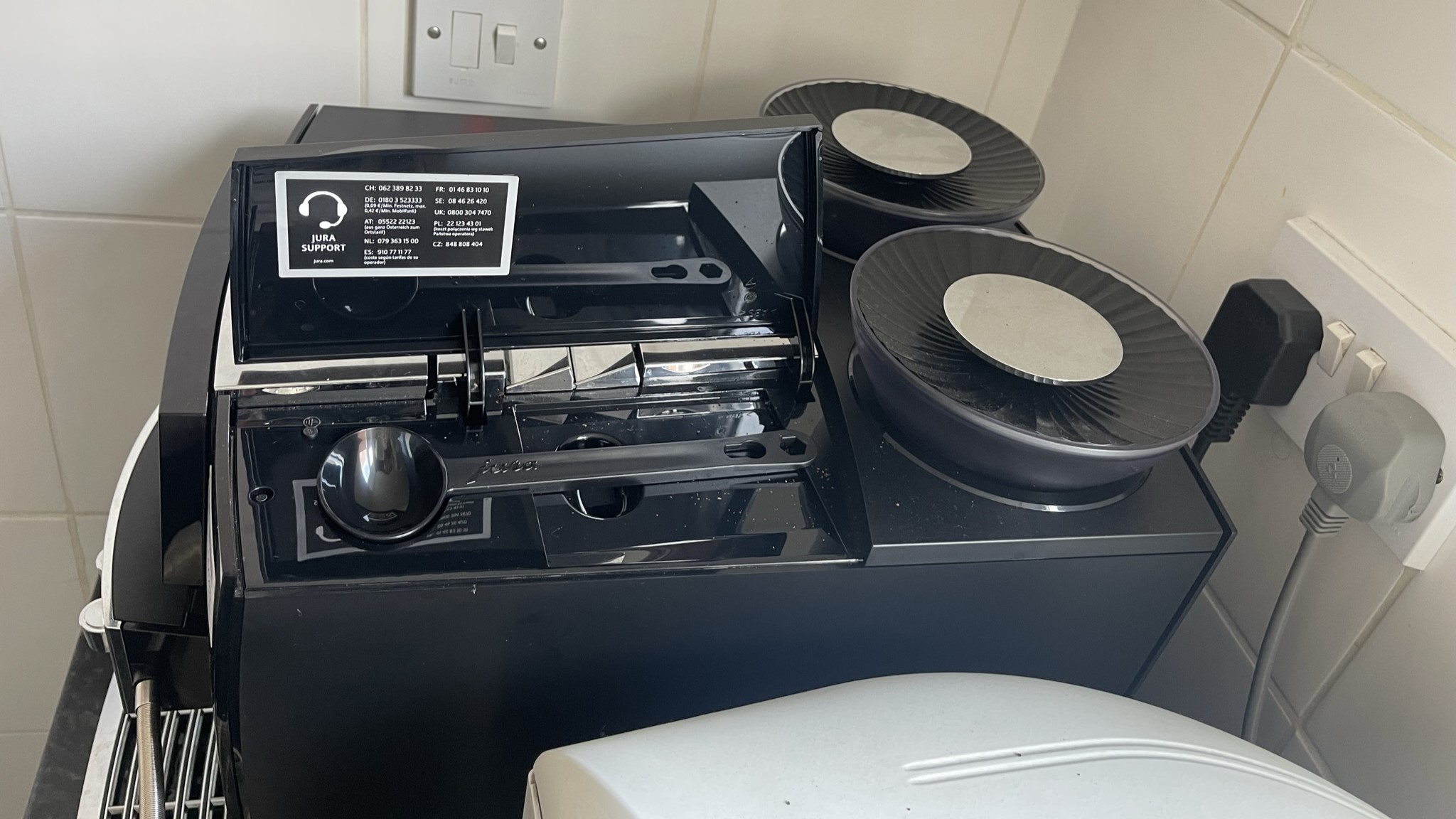
What makes the GIGA 10 look so stunning is the spout system. It features dual spouts and a milk dispenser, with lights illuminating your cup while the coffee is brewed. The spout system and the above components are finished with a shiny, metallic exterior that highlights the steam in quite an attractive fashion, particularly as the hot milk is poured. The spouts are height and width adjustable, too, which is a big help when accommodating different-sized cups.
The machine seems to be built from a mixture of materials. The Amazon listing notes the material as ceramic, but many components are made from plastic and what feels (and looks) like stainless steel.
You can fit 20 ounces of coffee beans at once, but this is shared across two 10 oz grinders that aren't used for the same coffee. For example, If you plan on making a flat white every morning, only one of the 10 oz grinders will be utilized.
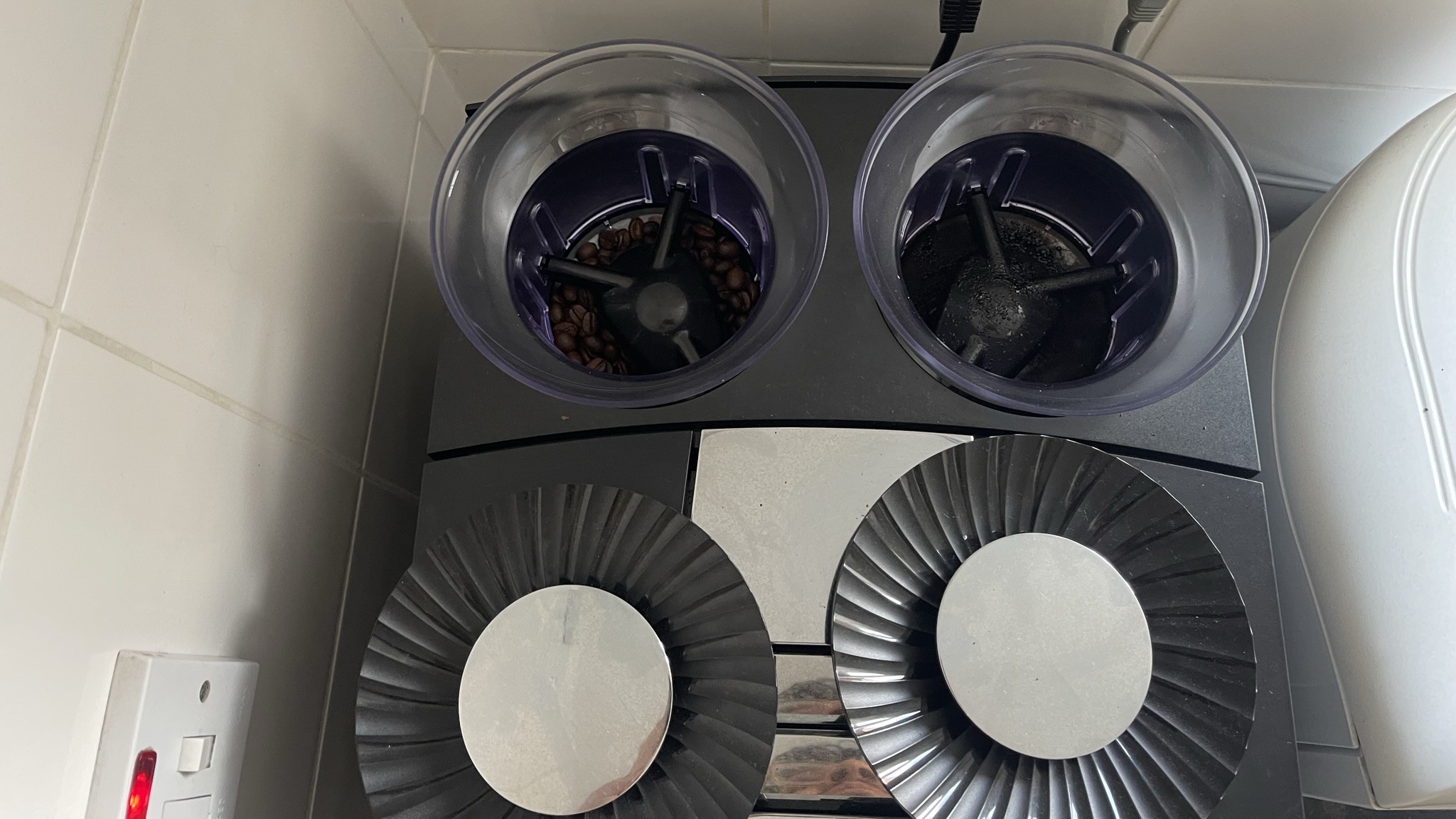
A key design feature of the GIGA 10 is the control panel. It's a one-touch panel comprising three touchscreens that display the various coffees you can make. When a coffee is being brewed, the three screens are used individually: one shows a list of the brewing process, one shows an image of a cup with how much is left to fill, and one shows the progress of the milk system. It's clear, clean, and easy to use, essential for a machine that can make many different drinks.
However, a somewhat fiddly aspect of the machine is how the milk system is used. The milk jug is separate, not integrated, so it sits next to the machine loosely. It does offer some flexibility, though, for where you want it placed, and it can sit nicely on the drip tray when the machine isn't in use.
Score: 4.5 out of 5
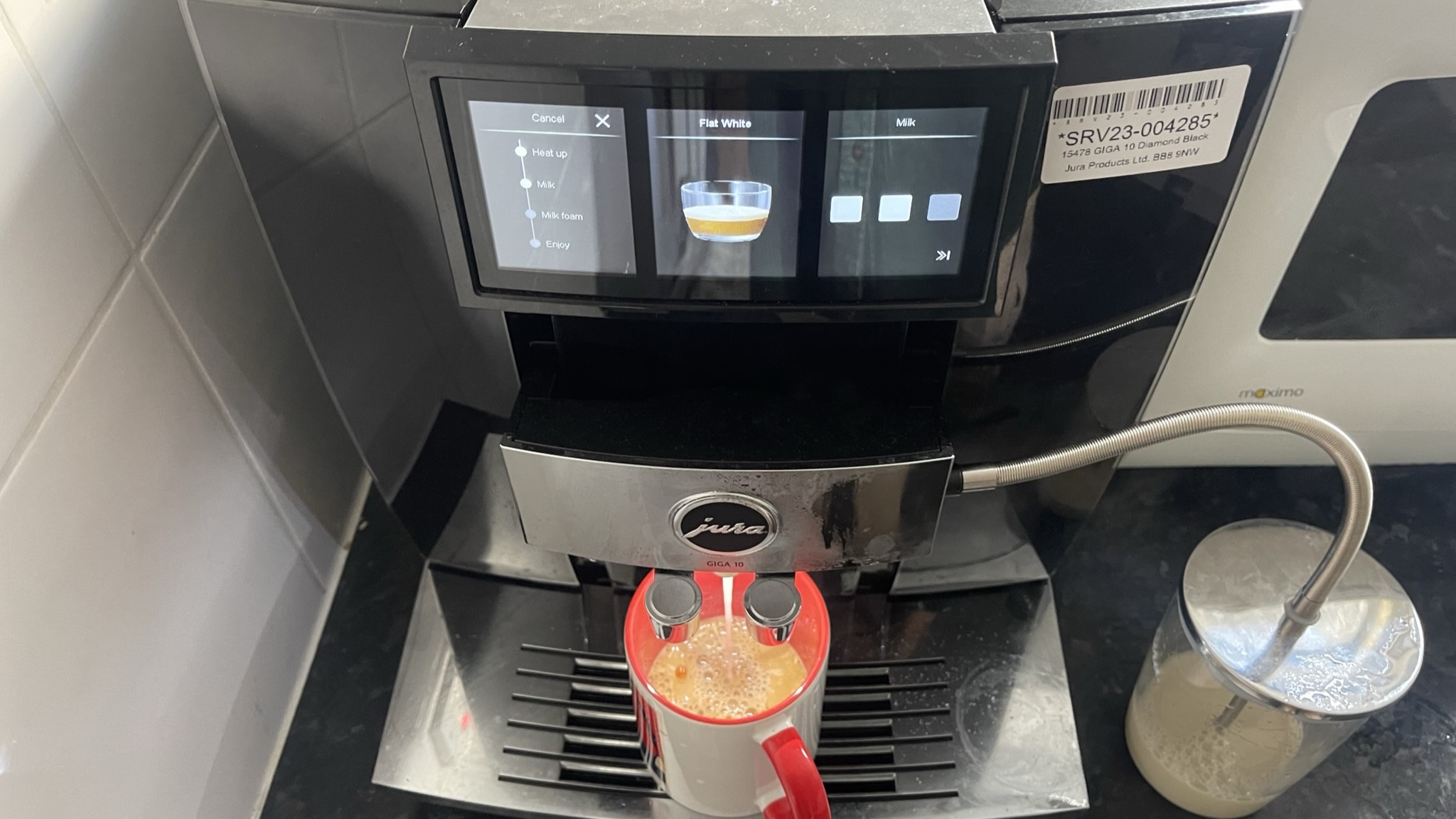
JURA GIGA 10: Performance
Coffee
Every coffee I had from the JURA GIGA 10 tasted spot-on. It shows that they've ensured every beverage is treated appropriately. I tried all sorts: lattes, latte macchiatos, flat whites, cappuccinos, espressos, Americanos, cold brews. I even tested the milk foam by itself when making barista coffees with my Nespresso, and that turned out great, too.

The coffee has a barista-type quality to it—so much so that I'd be happy to pay good money for any of these drinks at a coffeeshop. The coffee is rich and full-bodied and makes full use of the flavor of the beans. And with the hot, velvety milk foam on top, it is a luxurious way to enjoy your coffee in the morning.

Grinders
The disc grinders are found at the top of the machine. To use them, simply open the circular lids and pour in as many coffee beans as you need. No grinding is required on your part, as the machine is fully automatic. You'll know when they're being used as you'll hear a (very) loud grinding sound when making your coffee—and every time the coffee machine is turned on.
Panoramic one-touch control panel
Upon start-up, a 'Jura' animation is shown across the three screens before the menu, showing all the coffees you can select from. The screens will display anything that needs to be cleaned or rinsed before showing the coffee menu.
It's intuitively easy to select from the menu. The drinks don't all fit on one page, so arrows guide you to the rest of the selection. As I used the coffee machine over time, my regulars started to be displayed first, so I could easily choose a flat white or a latte macchiato as soon as it was turned on.
After selecting your coffee, a screen pops up where you can customize the brew. Of course, this varies depending on which coffee you choose, but there is an impressive amount of customization on offer here. Coffee strength, milk foam volume, and milk/coffee ratios can all be adjusted on sliding scales so you can play around and find your optimal setting. Once you have, you can set favorites to quickly select the next time you use the machine.
Saying that there is a pretty notable flaw with the control panel. Certain coffees will be greyed out on the coffee menu if there aren't enough beans in the grinders. Once you pour more beans in, the coffees will become available again, and you can select them as normal. But what often happened is that I'd select one of these coffees, the machine would start brewing, and then a window would pop up saying, 'Fill right (or left) bean container.' You then have a very short time filling the container again and pressing the screen so it doesn't cancel. If you're not quick enough or fail to touch the right screen, the coffee will stop mid-brew, using up the beans you put in and leaving you with a few splashes of coffee. It seems to be a huge design oversight that resulted in me wasting a lot of coffee as you can't return and resume the brew. It would be more user-friendly and make more sense if the coffees were only available to select if there were enough beans for the whole brewing process, not just the first step.
Of course, this can be avoided by having plenty of coffee beans to hand at all times and making sure the containers are always at least half-filled—which shouldn't be too difficult for anybody who can afford this coffee machine. But when you're running low, the last thing you need is to waste the last few beans on half a coffee.

Care & maintenance
You can go a while between filling the water tank thanks to its large capacity, but the milk jug needs frequent filling. It's never a surprise, though, as the jug is glass, so you can see whenever it's running low. Plus, as the jug can disconnect from the machine, you can put it in the fridge if there's still milk that won't be used that day.
Upon starting up, the JURA GIGA 10 will rinse itself through the spouts and update you when it needs a more thorough clean. The updates usually pop up right as you turn it on or switch it off.
You'll get the most common maintenance notification to clean the milk system, but you'll also need to clean and descale the coffee machine. This is relatively easy; all you need is JURA cleaning tablets (Amazon). Once you select the cleaning program, the instructions guide you through and tell you where and when to insert the cleaning tablets; it's as easy as you'd hope at this price point.
The drip tray needs to be emptied and cleaned often. It can hold a lot of liquid, but as the machine rinses every time it's turned on, this builds up quickly. Bean-to-cup machines naturally produce a lot of mess from coffee grounds, so this is something to consider with the JURA GIGA 10.
Score: 4 out of 5
Should you buy the JURA GIGA 10?
| Attribute | Notes | Rating |
|---|---|---|
| Price & availability | Too expensive for most households | ★★★ |
| Design | A premium machine with impressive customization | ★★★★½ |
| Performance | Delicious coffee, low maintenance, but a big design oversight | ★★★★ |
Buy it if…
Don’t buy it if…
How does the JURA GIGA 10 compare?
If you're unlikely to choose all 35 drinks on offer here, you could save a lot of money with one of JURA's more affordable models, like the JURA E6 or the JURA J8.
Or, if you know how to make barista coffees using an espresso shot and frothed milk, you could choose a much cheaper option like the Breville Barista Touch Impress or the Breville Barista Express Impress. We've reviewed both and awarded 5 stars to each.
How I tested the JURA GIGA 10
- Tested for four weeks, making 1-3 drinks per day
- Tested using three of my favorite coffee beans
- Tried the variety of coffees on offer, hot and cold
I tested the JURA GIGA 10 over 4 weeks, using it as the primary coffee maker in my kitchen. My housemates and I used the machine to make coffee of all types, and I experimented with the customization settings to see how much you could change.
Read more about how we test.
- First reviewed: December 2023






